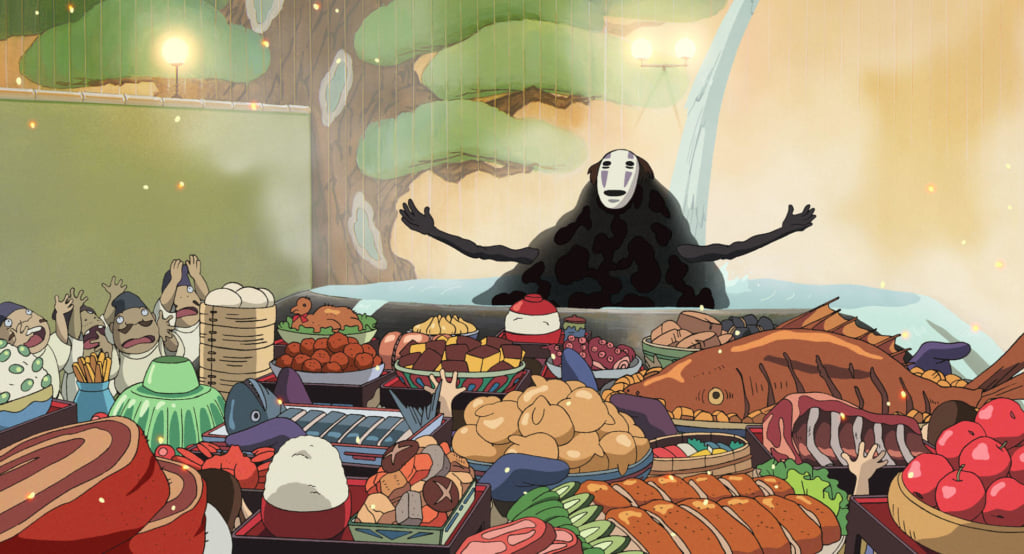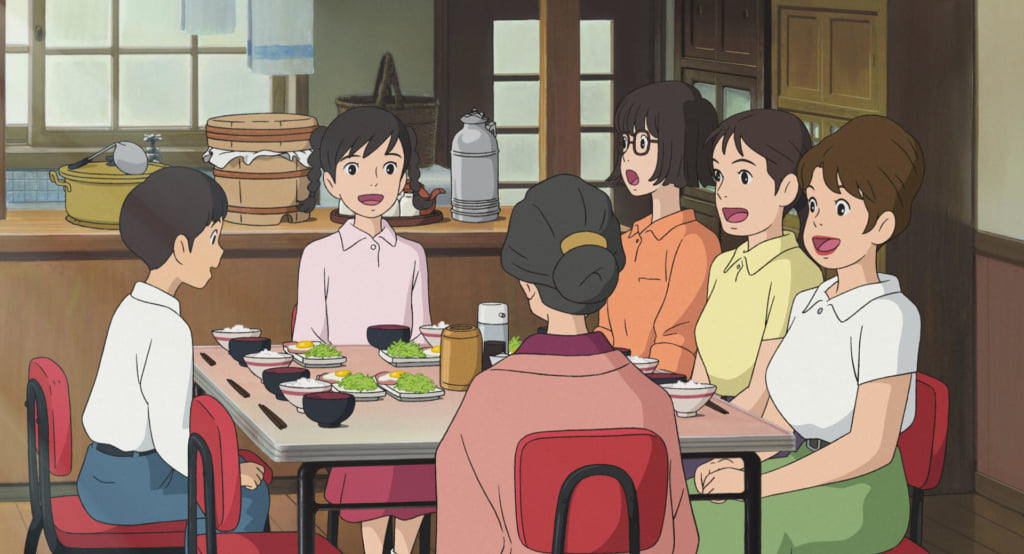Studio Ghibli’s Delicious Dishes Are More Than Just Details
Food, often inspired by the directors' favourite recipes, is a crucial element in the plot of these animated films.

© Studio Ghibli
During an AMA (‘ask me anything’) on Twitter in April 2021, a fan asked: ‘Why does the food in Studio Ghibli films always look so good?’ Toshio Suzuki, producer and former president of the animation studio, responded: ‘Because it’s the food that Miyazaki made himself.’
This revelation confirms the fact that feature films like Spirited Away (2002), Ponyo (2009), and From Up on Poppy Hill (2012) are so popular because the master of animation drew inspiration from his own experiences when creating them.
Food, a means of driving the narrative
Known for its endearing characters and dreamlike landscapes, Studio Ghibli gives food—a symbol of history and culture—an integral role in its films. Herring and pumpkin pie, ramen (noodles in a fish or meat broth), red bean brioche… These myriad delicate dishes made and then drawn by Hayao Miyazaki do not simply awaken the viewer’s senses. They play a decisive part in both narrative and character development. ‘Food and eating is so closely associated with family and emotion’, declared president of American distributor GHKIDS, Dave Jesteadt, to Serious Eats. For instance, the connection between the two protagonists in Castle in the Sky (2003), Pazu and Sheeta, strengthens after they share a fried egg on toast, and in Spirited Away, after her parents are transformed into pigs, Chihiro, the heroine, summons up courage when eating onigiri (rice balls wrapped in nori seaweed).
To pay homage to this art of eating, something that is synonymous with joy and happiness for Studio Ghibli, the eponymous museum in Mitaka held an exhibition entitled Taberu wo Kaku (literally ‘drawing eating’) or ‘Delicious! Animating Memorable Meals’ in English, in 2017. ‘Food that is still warm, that looks soft and tender, with the wonderful flavour showing on the faces of those eating it—these scenes of meals are appealing and charming. No dialogue is needed to convey deliciousness and happiness’, states the description of the event.
More information can be found on the Studio Ghibli website.

© Studio Ghibli

© Studio Ghibli
TRENDING
-
A House from the Taisho Era Reveals Its Secrets
While visiting an abandoned building, Hamish Campbell discovered photographs the owner had taken of the place in the 1920s.

-
The Taboo-Breaking Erotica of Toshio Saeki
The master of the 1970s Japanese avant-garde reimagined his most iconic artworks for a limited box set with silkscreen artist Fumie Taniyama.

-
With Meisa Fujishiro, Tokyo's Nudes Stand Tall
In the series 'Sketches of Tokyo', the photographer revisits the genre by bringing it face to face with the capital's architecture.

-
Masahisa Fukase's Family Portraits
In his series ‘Family’, the photographer compiles surprising photos in which he questions death, the inescapable.

-
Hajime Sorayama's Futuristic Eroticism
The illustrator is the pioneer for a form of hyperrealism that combines sensuality and technology and depicts sexualised robots.





